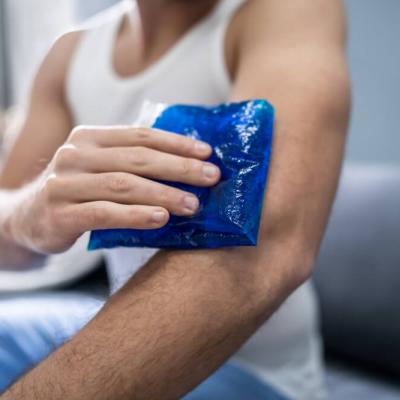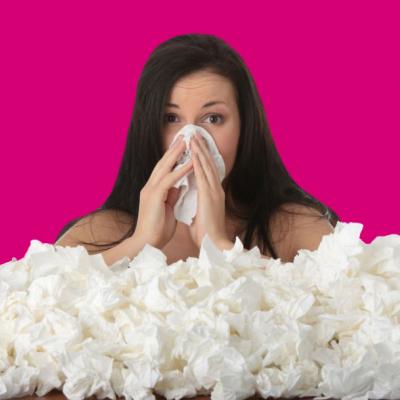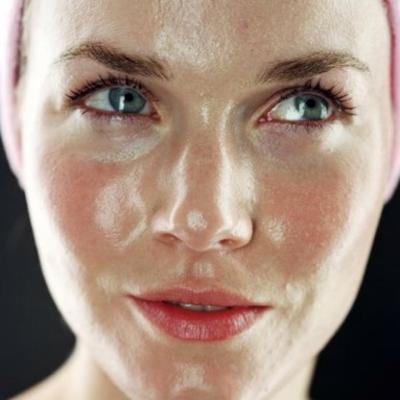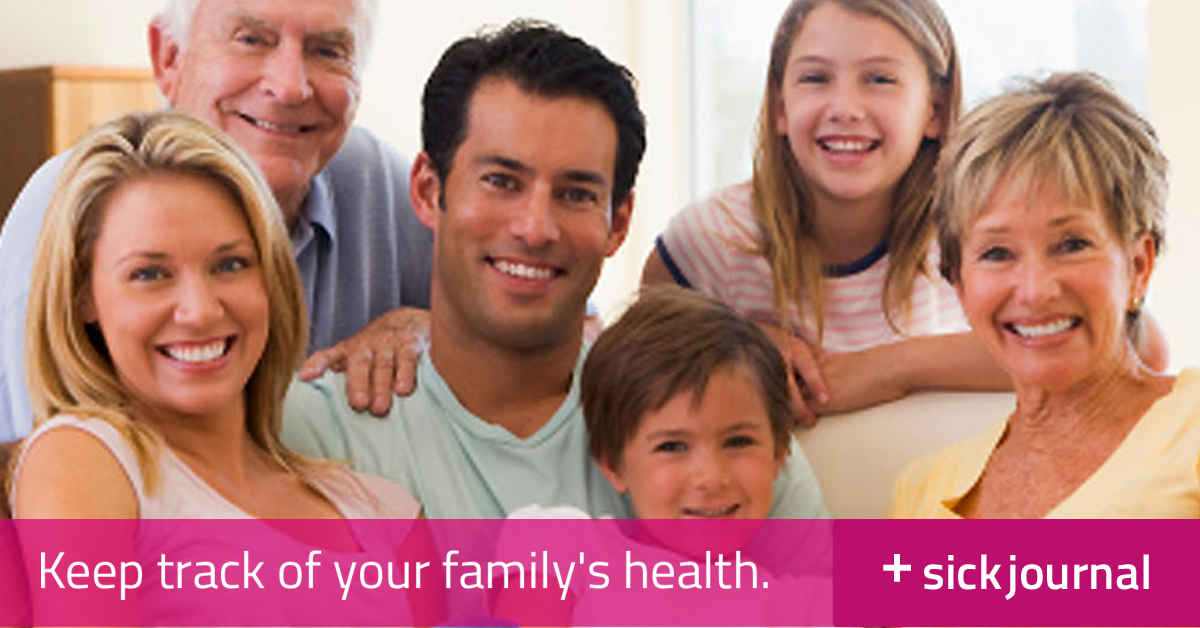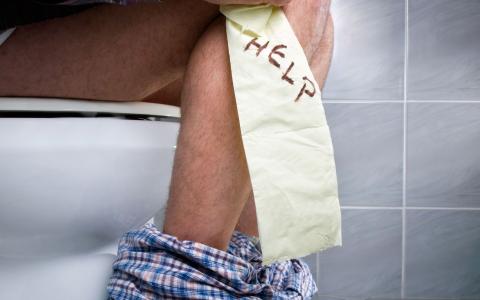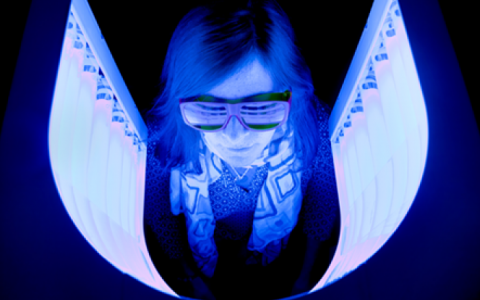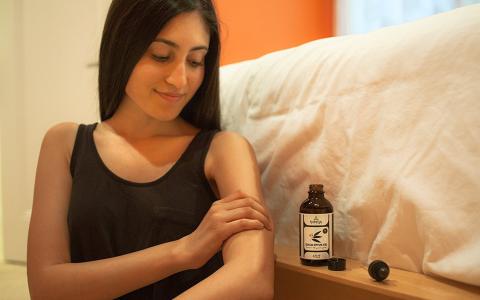13 Skin Conditions you can Cure with Blue Light Therapy
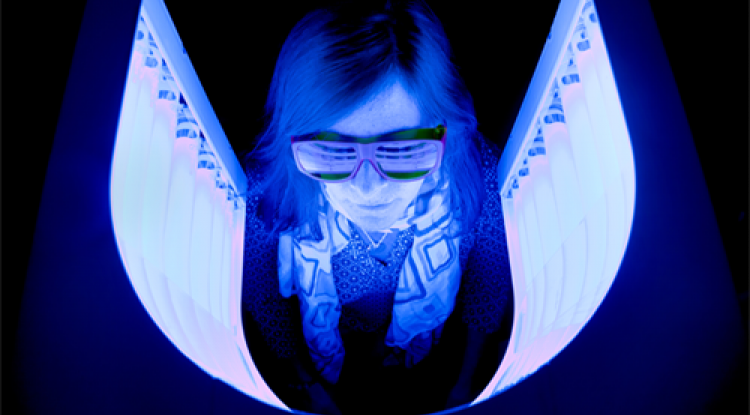
It is stating the obvious that sunshine and natural light are essential to our well-being. But with our busy, modern lifestyles, many of are simply not getting the benefits of the right type of light at the right times. This undoubtedly impacts our fitness, our health, and our energy levels.
In recent years, there have been fantastic advances in the field of Light Therapy (also known as Phototherapy or Heliotherapy).
Light Therapy involves the controlled exposure of daylight or specific wavelengths of light to a patient. A specific type of light is administered for a prescribed amount of time and at specific times of the day.
One of the exciting developments in the field of light therapy has been "Blue Light". Blue Light treatments use a narrow-band of high-intensity blue light that does not contain ultraviolet light. It's unlike other light therapies that use ultraviolet light which can be damage your skin.
Is Blue Light Therapy a Cure-All treatment?
The benefits of Blue Light therapy are wide ranging. It is used in a whole range of treatments.
While clinical trials are still to be completed, the extensive use of light therapy throughout the years gives confidence that Blue Light therapy can play a powerful role in improving our health and well-being.
Let's take a look at some of the most common uses for Blue Light therapy.
Blue Light Therapy for Treating Skin Conditions
Blue light therapy is a form of light therapy that has been found to have very effective for treating a wide range of skin conditions and ailments.
While natural light therapy and controlled light therapies have been used extensively for a number of years in the treatment of skin conditions, the advantage of blue light therapy is that the intense light that is emitted during the therapy does not contain any ultra violet light which can cause damage to the skin.
Blue light therapies are being used to treat a whole range of different health issues and ailments. However they have been particularly popular for use in treating acne and other skin conditions.
Acne
Sunlight has long been as an important component in the treatment of acne. The problem with sunlight is that is almost impossible to control the duration and intensity of exposure so use in a clinical setting is difficult to manage. Also, the bigger downside with both sunlight and traditional light therapies is that prolonged exposure can be damaging to the skin due to ultraviolet light.
Blue Light therapy has been widely approved for the treatment of moderate instances of Cystic Acne (that has not responded to other acne therapies). It is an effective treatment for acne because it helps to destroy the bacteria that is causing the skin irritation.
Instances of adult acne are often caused by hormone imbalances, either an overproduction of androgens (male hormones) or an imbalance in estrogen levels. Major changes in your body such as during pregnancy, peri-menopause, and menopause can lead to hormonal imbalances and acne breakouts. Blue light therapy has been used to treat hormonal acne but at this stage there are no clinical trials to confirm effectiveness. Be sure to discuss any instances of hormonal acne with your dermatologist before undertaking any treatment.
The treatment is simple to administer and generally involves the patient sitting in front of a blue light lamp for a set period of time (generally around 15 minutes, twice a week, for a four week period).
Side effects are fairly minor but may include some dryness around the treated areas and also some temporary pigment changes. Learn more about ways to get rid of Acne
Oily Skin
Oily skin is the term generally used to describe the effect of an overactive sebaceous gland that can result in large pores and blackheads.
Blue light therapy is considered to be an effective treatment for oily skin. It can help to reduce the activity of the sebaceous gland so that it doesn’t produce as much oil.
Clinical studies are still continuing for this treatment so you should discuss treatment options with your dermatologist. Learn more about ways to get of an Oily Face
Blackheads
Blue light therapy can be used for the treatment of blackheads and severe acne lesions. However it is likely that only small improvements in the appearance of the effected area will be achieved. Clinical trials are still ongoing and you should discuss treatment options with your dermatologist. Learn more about getting rid of blackheads
Rosacea
Rosacea is a very common red, acne-like skin condition that affects a lot of people around the world but generally presents in caucasian people with fair skin and will appear between the ages of 30-50. The main symptoms are small dilated blood vessels, small cysts, and irritated eyes. Some cases may be so mild that people are not aware that they suffer from Rosacea.
Rosacea is a chronic, incurable skin condition. Although sometimes equated with adult acne, Rosacea is quite different even though the two conditions can coexist.
While it is not known what causes Rosacea, it is believed that there are a number of factors that can trigger the condition to flare up. Factors include exercise, alcohol consumption, smoking, hot drinks, stress, exposure to sunlight, or spicy-food. While Rosacea can not currently be cured, there are a range of treatments that are available to sufferers.
Blue light therapy has been shown to be particularly effective in reducing and minimising the symptoms of Rosacea. While it has not yet been shown to cure the condition, blue light therapy has been shown to have long-lasting results for patients and has helped to achieve extended periods of remission from the condition and its symptoms.
In order to be effective for Rosacea sufferers, the application of blue light therapy for these patients generally requires multiple treatments over a period of three to six weeks. During this period patients are advised to avoid direct sunlight and any other potential triggers to the symptoms of the condition.
For sever cases or symptoms of Rosacea, then a doctor might consider a combination therapy approach to achieve the desired results.
One of the long-lasting and most visible symptoms of Rosacea are the small blood vessels that become visible in the face. These are called telangiectasias and look like thin red lines just beneath the skin. These can be treated by a dermatologist using laser light therapy.
If you suffer from acne or rosacea then blue light therapy could be the treatment that you have been looking for.
Eczema
There is a growing school of thought that suggests that Blue Light therapy can be effective in treating Eczema however clinical trials completed to date have not been conclusive.
Eczema, which is sometimes referred to as Dermatitis, is an inflammation of the skin and it can be quite itchy and unsightly. The occurrence of Eczema around the world is very common, however the severity of Eczema can vary dramatically between patients, from minor rashes to extreme skin irritation.
Blue light therapy has been shown to be an effective treatment for eczema. The light therapy suppresses the overactive skin immune system cells that are causing the inflammation.
Clinical studies are still ongoing. So you should discuss treatment options with your dermatologist. Learn more about getting rid of Eczema.
Psoriasis
Psoriasis is a localized inflammation triggered by the body’s immune system.
Blue light therapy has been shown to suppress the immune system and thereby help to reduce the inflammatory responses that present as Psoriasis. It's not harmful to the health of the body at all, but it can be unsightly.
Blue light therapy is safe and easy to use. It is almost like lying under a tanning bed, but without the risk of dangerous ultra violet light that damages the skin. Generally, the exposure time used for this type of therapy is very short. The exposure is controlled by a timer that turns the lamps off once the allocated treatment time has been completed. Learn more about treating Psoriasis.
Stretch Marks
Stretch marks on your skin are generally caused by pregnancy or significant weight loss. Generally occasions where your normal elastic skin is not able to fully adapt to the change in body shape.
Blue light therapy is being used extensively to help reduce the appearance of stretch marks. Light therapy won’t actually remove the stretch marks from your skin but will help to even out the pigmentation of the marks, so they are less noticeable.
This is particularly effective when the stretch marks are relatively fresh and may be exhibiting bright red or purple colors. Blue light therapy can help to remove this discoloration from the effected area of skin. Learn more about getting rid of Stretch Marks
Wrinkles
Blue light therapy is being used to help rejuvenate ageing skin and dark spots by helping your skin maintain elasticity and firmness.
Light therapy is commonly offered as part of facial treatments in spas and by skin specialists to help the cell renewal of the skin on your face.
This can help to reduce the appearance of wrinkles. It will not necessarily smooth the skin, but by keeping the skin as elastic as possible, then it should help avoid wrinkles deepening on the face.
Here are 5 Tricks to Get Rid of Under Eye Wrinkles.
Hyper-Pigmentation or Dark Spots
Hyper-pigmentation is when an area of skin becomes darkened. This is caused by an overproduction of melanin and this could be triggered by sun damage, inflammation or other skin injuries.
Areas of the skin that are most likely to incur hyper pigmentation are your face and the backs of the hands.
People with darker Asian, Mediterranean, or African skin tones are more likely to experience hyper-pigmentation.
Blue light therapy is being used to help treat the signs of hyper-pigmentation by evening out the tone and pigment of the effected areas.
More Information about getting rid of Dark Spots.
Melasma
Melasma is a dark skin discoloration that is particularly common in pregnant women or women taking hormone replacement therapy medications.
Areas that are often effected by Melasma are your upper cheek, nose, lips, upper lip, and forehead. The condition will generally develop over time. It is believed to be enhanced by surges in hormones in the body.
Blue light therapy is being used to treat Melasma. It can help to even out the pigment and discoloration that is showing on the skin. However clinical studies are ongoing and so you should consult your dermatologist before beginning any treatment programs.
Actinic Keratosis & Skin Cancer
Blue light therapy is being used to eliminate the thin, superficial cancer cells known as actinic keratoses. This is particularly effective when treating pre-cancers of the skin.
There are some indications that Blue Light therapy can help as an anti-oxidant, helping to remove free radicals from the body.
This would deliver anti-cancer benefits and help fight the signs of ageing.
Keratosis Pilaris
This is a very common skin disorder that affects people of all ages. It is a benign condition but presents as numbers small, rough, red bumps around hair follicles on the body - primarily on the arms, legs, buttocks, and sometimes cheeks. Almost like small warts. Blue light therapy has been used to help treat Keratosis Pilaris but dermatologists generally recommend a combination of different therapies to manage the condition.
Neonatal Jaundice
Jaundice is a yellow discoloration in a newborn baby's skin and eyes [ref]. Infants can develop jaundice due to an elevation of bilirubin levels caused by the breakdown of fetal hemoglobin.
Phototherapy is the common treatment for neonatal jaundice and blue light therapy has been shown to be an effective way for the phototherapy to be delivered. It is particularly effective at breaking down the bilirubin that is causing the problem.
The light is generally applied through the use of over head lamps. The baby’s eyes are covered to protect them from exposure to the intense light.
For Treating other Issues
Aside form treating skin related conditions, blue light therapy can also be use for treating other types of medical issues.
Depression
Blue light therapy can assist with the suppression of the physical symptoms of depressive illnesses, especially Seasonal Affective Disorder (SAD).
Lack of natural light during the winter months can lead to a depressed mood, lack of energy, lapses in concentration, and fatigue. Natural sunlight is the best way of combating seasonal depression, but during the dark winters this often isn’t available and so the artificial light of Blue Light therapy is an effective alternative.
Insomnia
Insomnia can be caused by exposure to artificial lighting (such as televisions and computer screens).
By helping to stimulate, suppress, or reset the sleep cycle, Blue Light therapy can have significant benefits in relation to the timing, quality and duration of sleep.
Benefits have also been found in relation to melatonin production which helps regulate the internal body clock’s cycle.
Animal Issues too!
There have been some very encouraging results in the use of Blue Light therapy when treating both horses and dogs!
In particular, success has been seen when treating hoof problems, arthritis pain, inflammation, infections, abscesses, bone spurs, ligament soreness, tendon problems, sore backs, wounds, and salivary gland problems.
Frequently Asked Questions about Blue Light Therapy
While the practice of using natural sunlight or light therapy to treat a range of illnesses, conditions, and ailments has been well established for many years, the development of blue light therapy (which has the benefit of not containing any ultra violet light is a relatively recent advance.
As a result, there have been only a limited number of clinical trials completed. Much of the evidence of effectiveness or success comes from the experience of practitioners and patients. Here are some common questions people have about blue light therapy. If you have any questions not listed, please send them to us.
Can you use Blue Light therapy every day?
There is some indication that extensive and prolonged use of Blue Light therapy could lead to damage of the patient’s retina. To date there have not been any conclusive long-term studies to a clinically assess this potential risk.
Sounds like magic, does it really work?
Blue light therapy is used to treat such a wide range of conditions and illnesses that it is difficult to give a clear and definitive answer. With the evidence that we currently have available, there are clear benefits that have been achieved in treating skin conditions such as acne, psoriases, and eczema, and this is the area where most regulatory approvals have been obtained.
There also is a strong belief that blue light therapy can be used for its anti-ageing properties, reducing the appearance of lines or discolouration.
For other types of treatments there seems to be strong indications that blue light therapy is effective when used in conjunction with other forms of treatment, although further clinical trials are required before results are definitive.
Is it effective?
The effectiveness of blue light therapy will depend significantly on the type of treatment that you are undertaking and the tools that are being used. Light therapy uses a light box to control and administer the light. It all depends on the strength of the light, the frequency, and the duration of the treatment as to how effective any treatment will be.
It is in the treatment of acne and other skin conditions that blue light therapy has seen the greatest usage by practitioners and regulatory approval in a number of countries around the world. There are a number of research studies that have been published that have confirmed the effectiveness of blue light therapy in killing the bacteria that causes acne.
While the clinical evidence relating to the effectiveness of blue light therapy is still in its infancy, the widespread use of blue therapy and the positive experiences of practitioners and patients suggests that this form of treatment that could be worth exploring for a whole range of conditions, ailments, and illnesses.
How much does it cost?
The costs of blue light therapy will vary depending on your practitioner and the length of treatment being offered.
As a general guide you would expect to pay around $50 per treatment, however if you were paying for a series of treatments then discounts may be available.
Will my insurance cover blue light therapy treatments?
Whether or not your blue light therapy is covered by insurance will depend on the specific details of your insurance policy. But also on what you are seeking treatment for.
For example, it is more likely that you will have insurance coverage if you are getting blue light therapy for acne rather than if you are receiving blue light therapy for aesthetic purposes such as reducing the appearance of wrinkles on your face.
Are there any side effects or negative reactions?
In traditional light therapy, the main concern in relation to side effects has been the potential impact of long-term or repeated exposure to ultra violet light. In blue light therapy, the light that is used does not contain ultra violet light so that this is no longer a risk.
When blue light therapy is used to treat sleep disorders, it is thought that there is some risk that the patient may experience side effects such as jumpiness or jitteriness, headaches, and nausea.
Does blue light therapy cause macular degeneration?
While clinical finding on this topic have not yet been established, there does not seem to be any evidence to suggest that blue light therapy causes macular degeneration.
However practitioners caution that if you have an existing condition that makes your eyes very sensitive to light, or if you have a family history of macular degeneration, then you should consult with an ophthalmologist before undergoing and blue light therapy.
Does blue light therapy cause nausea?
Some mild cases of nausea have been reported by patients that are using blue light therapy for the treatment of depression. These effects are generally classified as fairly mild and disappear within a few days.
If a patient being treated for nausea is suffering from side effects then your doctor may recommend using a combination treatment by combining light therapy with medication or cognitive behaviour therapy interventions.
It's just blue light, can't I treat myself?
One of the barriers to using blue light therapy is that it can be quite expensive. Treatments must be administered over an extended period of time (for example, one to three sessions per week for six weeks) and each session could cost around $50 depending on the pricing structure used by your practitioner.
However the technology behind blue light therapy is relatively simple and there are a number of “Do It Yourself” solutions that could allow you to set up your own in-home treatment for a fraction of the cost of a clinical treatment program.
There are a number of home-use blue light therapy units on the market. They are not the same strength as clinical machines because they don’t contain the same number of diode bulbs per square inch as clinical machines.
This means that home units are less effective than clinical units because they are delivering less LED energy (because the diodes are less concentrated) and so you will need longer exposure (that means longer sessions sitting in front of the light) in order to get the same effects that you would get from treatment in a clinical setting.
There is also a further complication with using home units because you may not have the level of control that clinical machines can deliver. For example, if your light is shining at the wrong wavelength then you may not be getting the treatment benefits that you are hoping for.
So before purchasing a home unit, you should ask your dermatologist to recommend one that would be best suited for achieving the results that you are looking for.
What are some popular in-home products I can buy?
In its early days of use, blue light therapy began as a procedure that could only be delivered in a clinical setting. While effective, it is also a huge commitment of the patient's time because treatments would need to be delivered on a regular basis, over an extended period of time. For example, for acne treatments you would need to be treated at least once a week over a six week period.
With advances in the technology and greater understanding of how the treatment works, many medical companies are now producing blue light therapy units that are designed to be used by the patients in their own homes.
One popular form of blue light therapy machine for home use is the blue light therapy mask. This is particularly useful for the treatment of acne on the face.
Another popular form of machine for the treatment of acne is called a blue light therapy wand. Blue light therapy wands automatically detect contact with the skin and dispense a controlled three-minute long application of blue light to the affected area. It provides a non-invasive technique designed to kill the bacteria that cause acne break-outs.
Can I make my own blue light therapy apparatus?
When you are looking at making your own blue therapy treatment, it is unlikely that you will be to construct something that has enough control and power to use for treatments such as acne on your face. But you can easily build a light box that will assist you combat sleep disorders and mood imbalances.
The high-power blue light therapy LEDs or blue light therapy bulbs are becoming more affordable.
- Your first step is to create the base in which you will mount the bulbs. It is best to do this with a material such as aluminium because the bulbs generate a lot of heat.
- Shape the base into your desired formation.
- Next you will need to create an isolation for the LEDs sinch they are not electrically neutral. A material such as mica would be suitable for this.
- Place the LEDs into position.
- Solder the LEDs together and connect them to the power supply.
- Once you have your power board in place you can now finish off your product and you are ready to go.
Many people connect their light box to a timer so that it can wake them up in the morning.
Whether you are tempted to build your own or just looking for the best available unit that you can buy for home use, blue light therapy has a range of benefits. If you are wanting to improve the appearance of your skin or improve the quality of your sleep, then it could be time to equip your home with blue light therapy.







